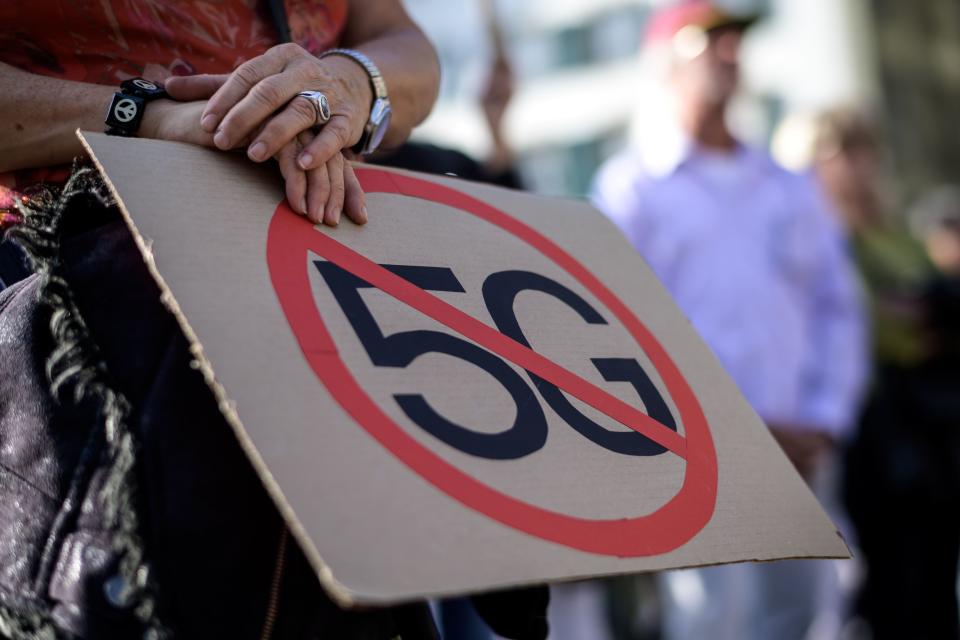5G is mostly hype so far

What you think of 5G wireless can depend on which side of the street you stand.
On one side of an intersection in downtown Washington, a Samsung Galaxy S10 5G and HTC 5G Hub hotspot both showed a Sprint (S) 5G signal. One block east, both devices showed only Sprint’s 4G LTE.
Should you be mad about that? No. So-called fifth-generation wireless, or 5G, promises lightning-fast download speads. But the difference in download speeds wasn’t actually worth getting worked up over.
And today, neither is this next generation of wireless connectivity. 5G devices cost too much and most only support a subset of 5G frequencies, the networks cover too little ground, and for mobile use LTE remains really good.
When a 5G hotspot is a 4G hotspot
When Sprint’s 5G signal is within range, it can be exceedingly fast. At a demonstration Aug. 27 in downtown D.C. for the launch of that carrier’s 5G service here, I saw the Speedtest app on a Samsung Galaxy S10 5G phone report download speeds as high as 413 megabits per second—10 times faster than what T-Mobile (TMUS) LTE yielded at same place.
But the everyday 5G reality seen on an S10 5G phone ($1,300 upfront or $54 monthly on a two-year lease) and an HTC 5G Hub hotspot ($600 upfront or $25 a month leased) loaned by Sprint has involved slower 5G sessions that have themselves been outnumbered by 4G connections.
For example, at the same intersection of 13th and F Streets Northwest where I saw that 413 Mbps 5G result, the Speedtest.net page on a 2017 HP (HPQ) Spectre x360 laptop tethered to the Samung phone’s mobile hotspot averaged 87 Mbps downloads, with uploads of 21 Mbps.
Both figures were just below the averages Speedtest measured in 2018 for fixed broadband in the U.S. — so no more worrying about an app taking much longer to download on the go versus on your home WiFi.
That could reflect actual customers now tying up that 5G bandwidth—or my running these tests at commuting-home time on a weekday instead of late morning. The WiFi link between phone and laptop may have scrubbed off some speed, but I wanted to test Sprint’s connectivity on a device that would let me make more use of it.
Two blocks east at 11th and F, Sprint’s 5G averaged 84 Mbps down and 11 up. And at 10th and F, I was back to LTE—with still-impressive downloads of 60 Mbps but pokier uploads of 1 Mbps.
The hotspot has delivered about the same connectivity, although it’s been less consistent about sharing that reliably with my laptop and an Apple (AAPL) iPad mini 5.
A best-case scenario
That difference doesn’t seem like it will make “every part of our lives better”—to cite one of the many overblown 5G statements from industry figures over the last few years.
But things would be worse at the other three national carriers. Sprint’s LTE network may rank last in third-party surveys, but its decision to launch 5G on longer-range but slower frequencies has made it an unlikely leader in 5G coverage.
In the Washington area, Sprint spokesperson Adrienne Norton said that carrier’s 5G signal now covers about 1.1 million people, up from 520,000 at its August launch. Sprint’s LTE covers some 6.6 million people here.
Sprint can do this because its 5G uses the same mid-band 2.5 GHz frequencies as its LTE. “They just have to piggyback on their existing sites,” said Roger Entner, founder of Recon Analytics.
AT&T (T) and Yahoo Finance corporate parent Verizon (VZ) have launched 5G on millimeter-wave frequencies that can offer much faster and more responsive connections—beyond a billion bits per second, with response times under 10 milliseconds compared to 20 to 40 I’ve seen on Sprint’s 5G and in the 30s and 40s on its LTE network.
But those frequencies don’t reach more than several hundred feet. As a result, 5G coverage at America’s two largest carriers amounts to islands of gigabit connectivity in seas of LTE. See, for instance, PCMag’s Sascha Segan’s first-impressions report on Verizon’s New York 5G network.
And since neither AT&T nor Verizon has posted a 5G coverage map, buying a 5G phone from either amounts to a large gamble.
Outside surveys have yet to provide their own coverage cartography. Patrick Linder, content and editorial director of RootMetrics, said that mapping site is still fine-tuning how it will incorporate 5G reports.
T-Mobile, meanwhile, is building 5G coverage on both millimeter-wave and lower-frequency bands—but the S10 5G it sells only supports those mm-wave bands. Its 5G coverage maps are bracingly honest about the resulting limits, showing this next-gen bandwidth limited to snippets of neighborhoods.
You can sit this out longer
Entner said it’s simply too soon to issue a verdict on 5G: “We are trying to judge the career potential of 5G based on how soon it starts to talk and when it starts to crawl.”
Waiting for the carriers to build more 5G coverage will improve the situation, but so will waiting for smartphone vendors to ship devices that support 5G frequencies beyond fast but frail millimeter-wave—some of which aren’t yet in service.
Susan Welsh de Grimaldo, a director at Strategy Analytics, emailed that low-frequency 5G “will be important for getting 5G as widespread as 4G in major markets.”
That, in turn, will require new phones: “The next wave of handsets that can get both mm-wave and low band are key.”
So go ahead and stop thinking about buying a 5G phone until next year. It’s not like you’ll be able to buy a 5G iPhone before then anyway.
Email Rob at rob@robpegoraro.com; follow him on Twitter at @robpegoraro.
Follow Yahoo Finance on Twitter, Facebook, Instagram, Flipboard, SmartNews, LinkedIn, YouTube, and reddit.

 Yahoo Finance
Yahoo Finance 
